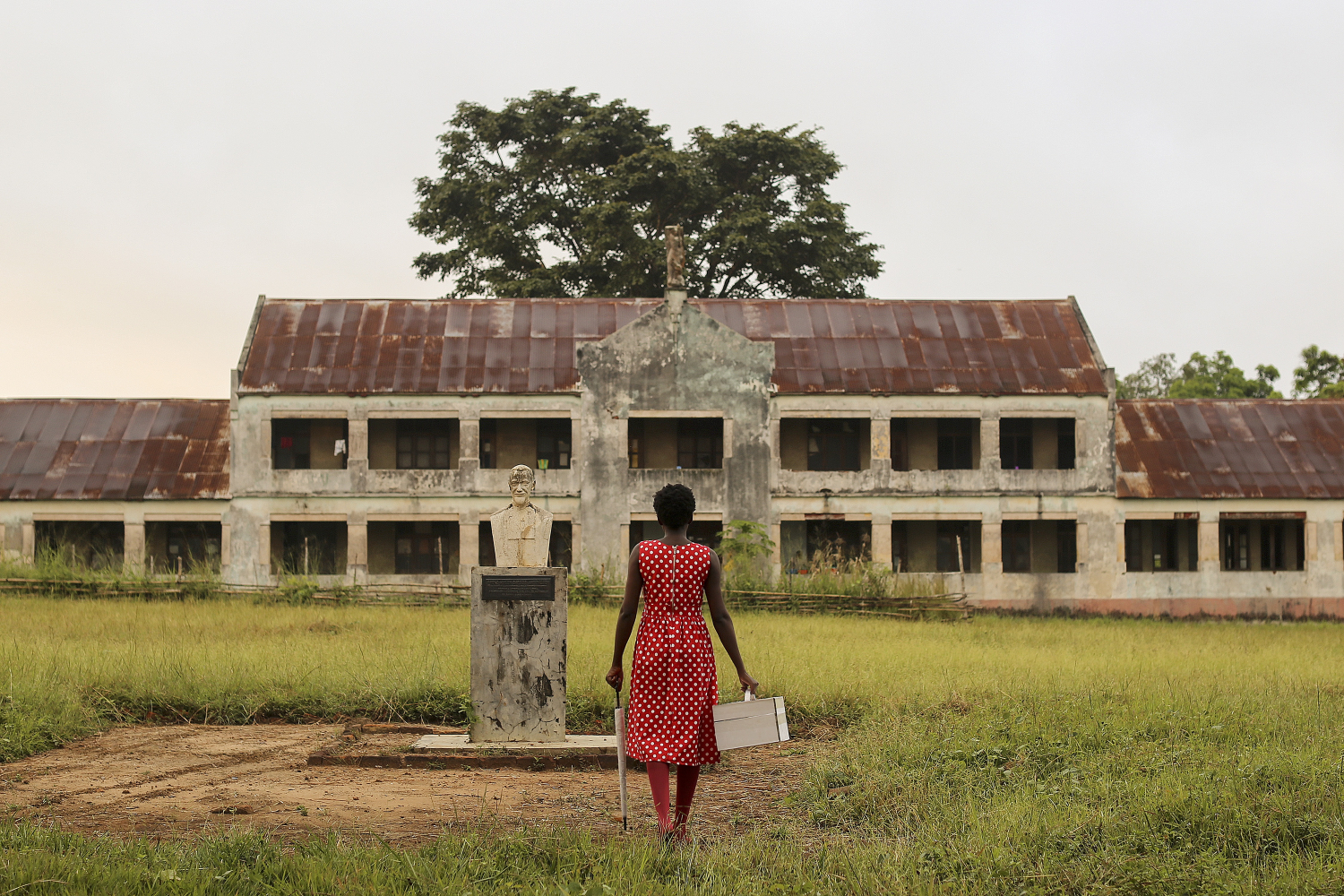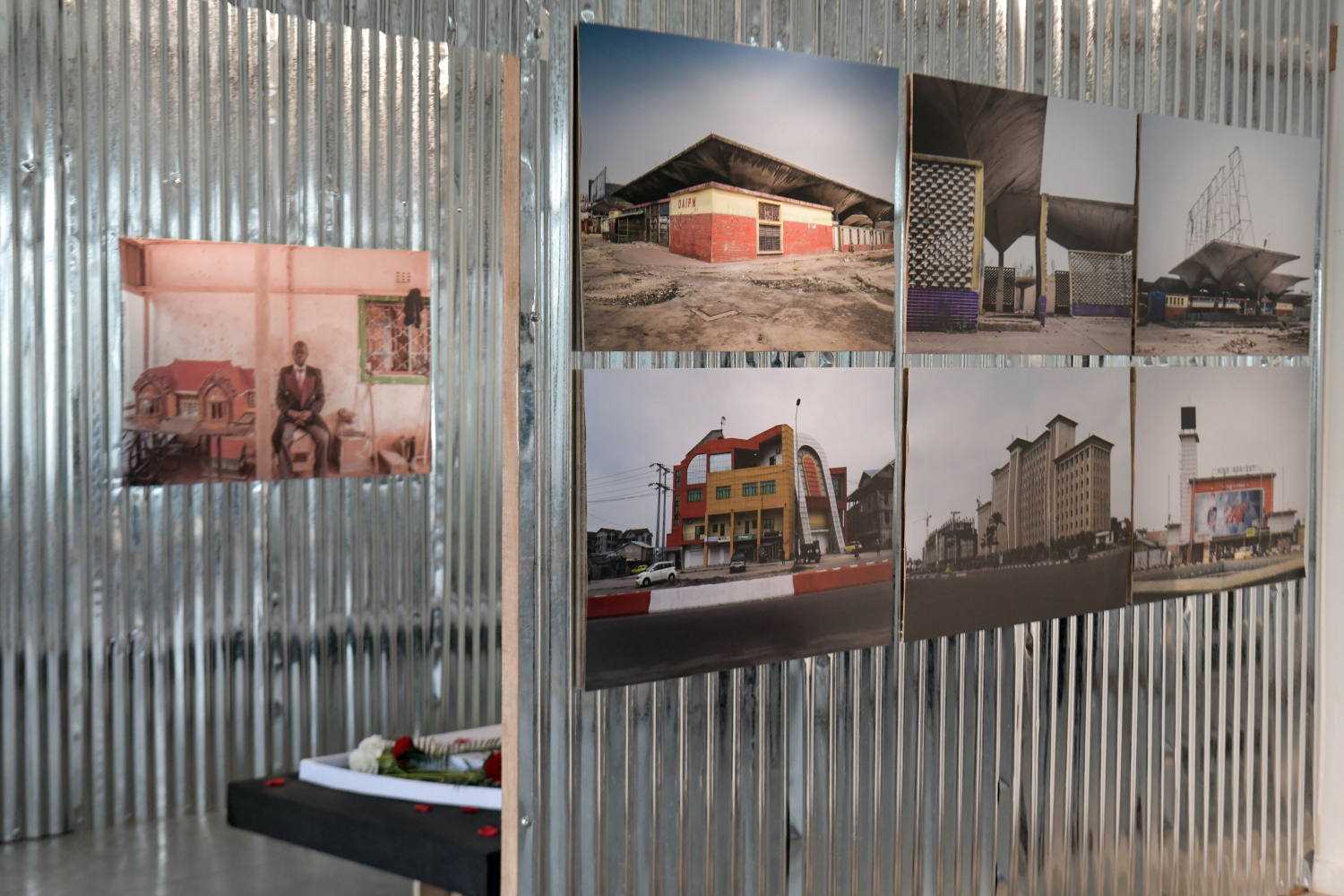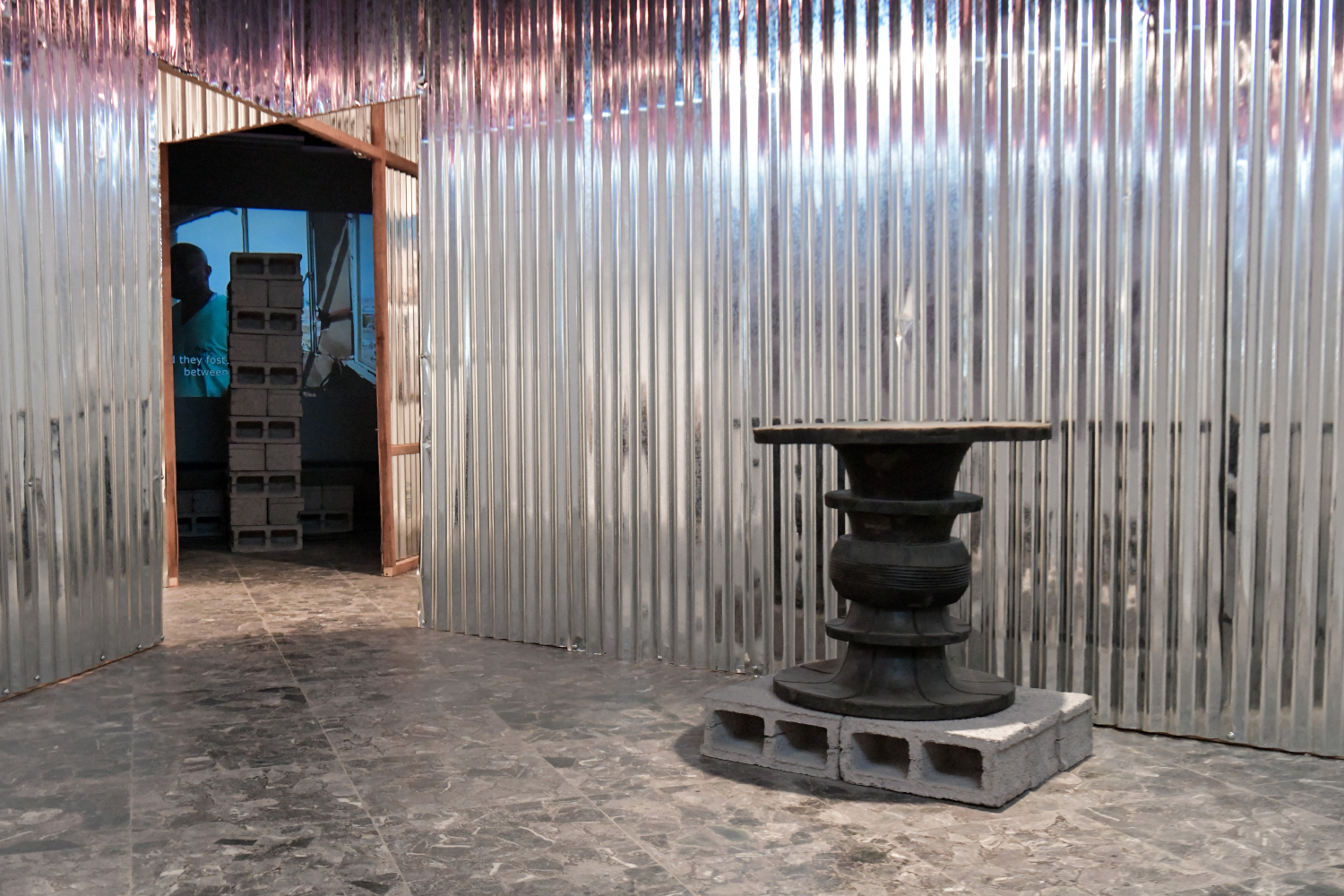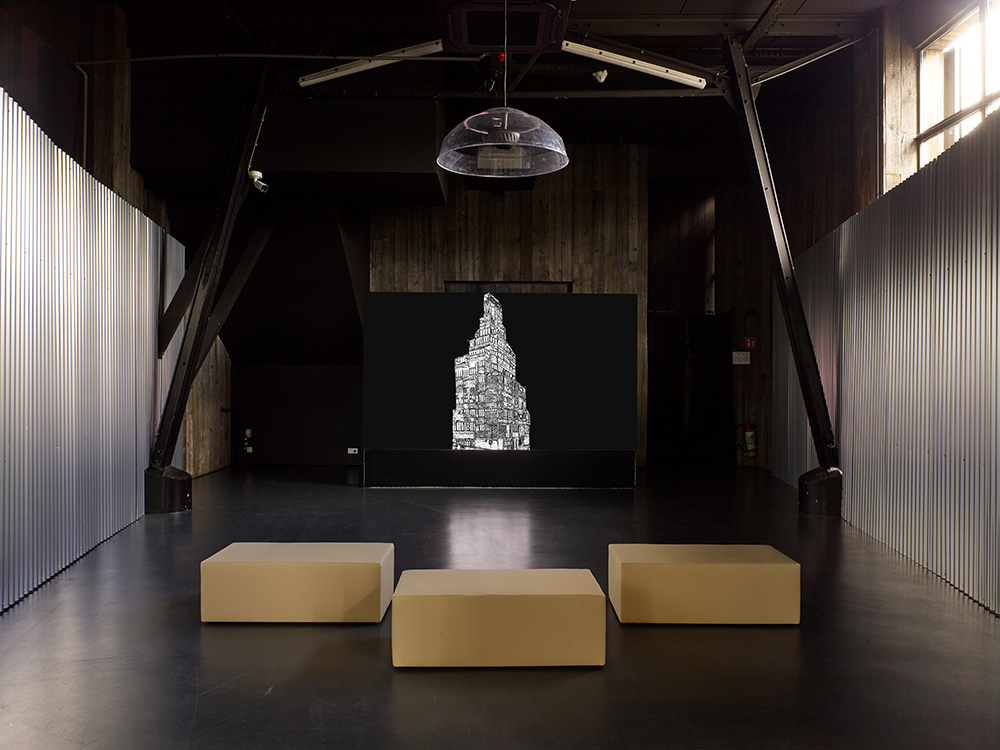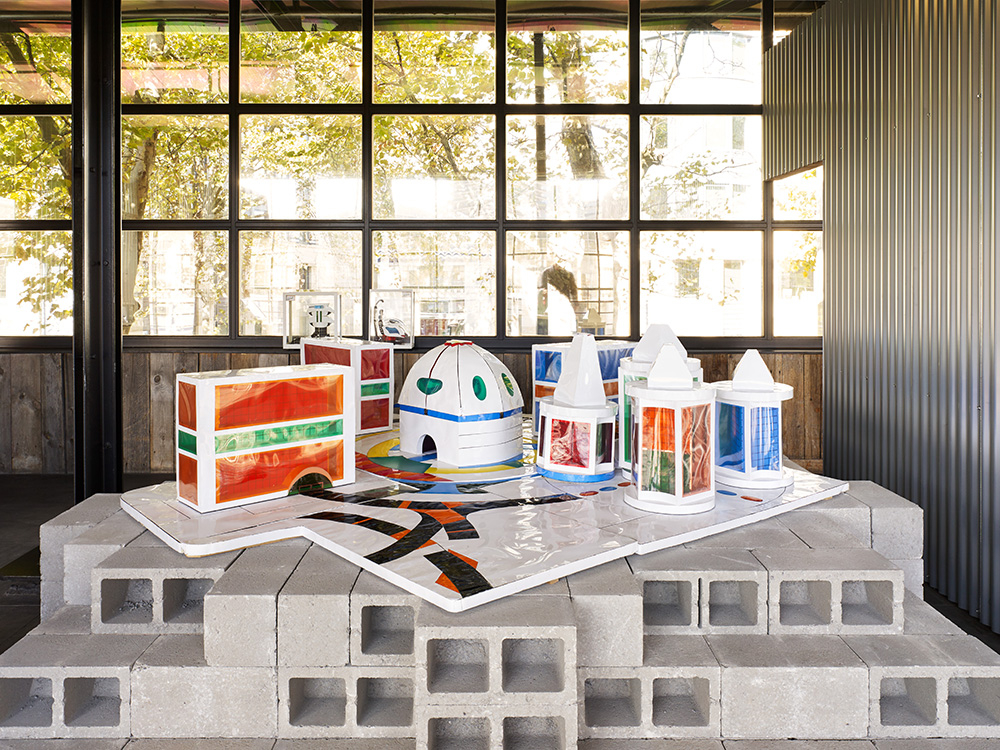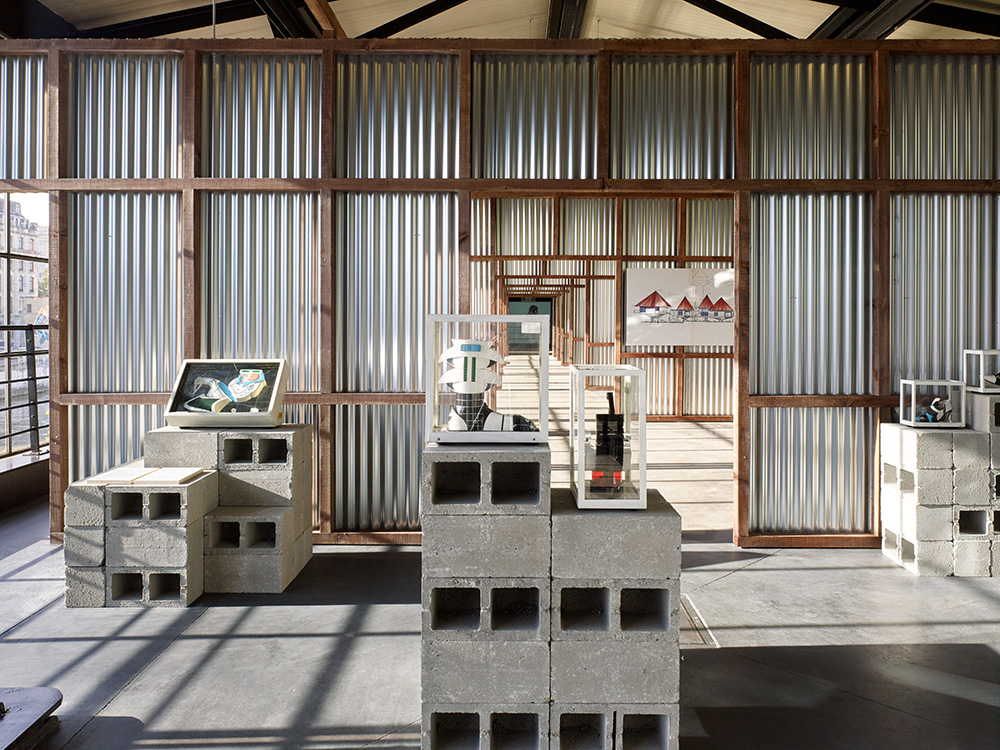Kinshasa (N)tóngá: Between Future and Dust
- 2022
- Kinshasa/Brussel
- exhibition
Kinshasa (N)tóngá presents a unique vision of the Congolese capital, its development, and its urban structure. Colonial legacy and the impact it has had on architecture in the third largest city on the African continent are themes addressed by the work conceived by the featured artists. (N)tóngá means“needle” or“construction site” in Lingala and therefore refers to the anarchic course that characterises Kinshasa's growth to date. Produced by Estelle Lecaille and Aude Tournaye (Twenty Nine Studio) in collaboration with KANAL-Centre Pompidou, the exhibition is structured around a scenography designed by Traumnovelle which, through the materials used, recalls the æsthetics of a city in the making. Kinshasa (N)tóngá: Between Future and Dust opens on September 23rd at K1, the pavilion situated across the water from KANAL-Centre Pompidou. This temporary venue will host a programme of events leading up to the opening of the future KANAL-Centre Pompidou.
Throughout history, Kinshasa has been built in successive layers, with the first traces of human habitation recorded on the banks of the river dating back to around 500 AD. The modern city was developed from 1881 onwards with the arrival of the Belgian colonisers and ambitious urban plans that reflected the colonial regime. The city was deeply segregated along the lines of its wide avenues, railway tracks, and parks that housed administrative buildings. Despite the initial rigidity of the city's plan, rapid development over the years was not regulated. Kinshasa has therefore grown organically into a metropolis of 17 million inhabitants and a hub of world trade, and to this day is still characterised by vernacular constructions and informal architecture.
The artists in the exhibition reflect on Kinshasa’s specific history and architecture through their work. Various media (photography, film, archives, installations, and performances) highlight the working methods and production processes that allow the people of Kinshasa to go against an imposed vision of the city and its identity. The term (N)tóngá thus refers to the power that resides in occupying space beyond the dogmas of modern architecture.
Comprising both original works and archival material, Kinshasa (N)tóngá offers an in-depth look at the Congolese capital, its heritage, and its perspectives for the future. Archival photographs trace the indigenous customs and roots of Kinshasa from the late 19th century to the 1970s. Modernist utopias and the city’s colonial past are documented in Magloire Mpaka Banona's work, and are questioned in Prisca Tankwey's performance Leopoldville Mourning as well as in Sammy Baloji and Filip de Bœck's film The Tower: A Concrete Utopia. In dialogue with this artistic momentum from Kinshasa, the exhibition presents archives from Italian architect Eugene Palumbo and his Congolese associate Fernand Tala N”Gai, who worked under President Mobutu Sese Seko during the return to "authenticity“in the 1970s. Comprising a large number of official and private projects, Palumbo's work remained in tune with the currents of modern architecture, while seeking to embody the precepts of a so-called "authentic“culture.
Featured artists: Bianca Baldi, Sammy Baloji, Filip de Bœck, Dirk Dumon and Mweze Dieudonné Ngangura, Azgard Itambo, Godelive Kasangati, Kongo Astronauts, Gosette Lubondo, Magloire Mpaka Banona, Mega Mingiedi, Pume Bylex, Isaac Sahani, Tankila Studio, Prisca Tankwey.
Kinshasa (N)tóngá: Between Future and Dust was exhibited in Kinshasa last March in partnership with the Académie des Beaux-Arts of the Congolese capital. The exhibition is part of "Living Traces", a project initiated by KANAL-Centre Pompidou and its partners that connects Brussels and Kinshasa.
